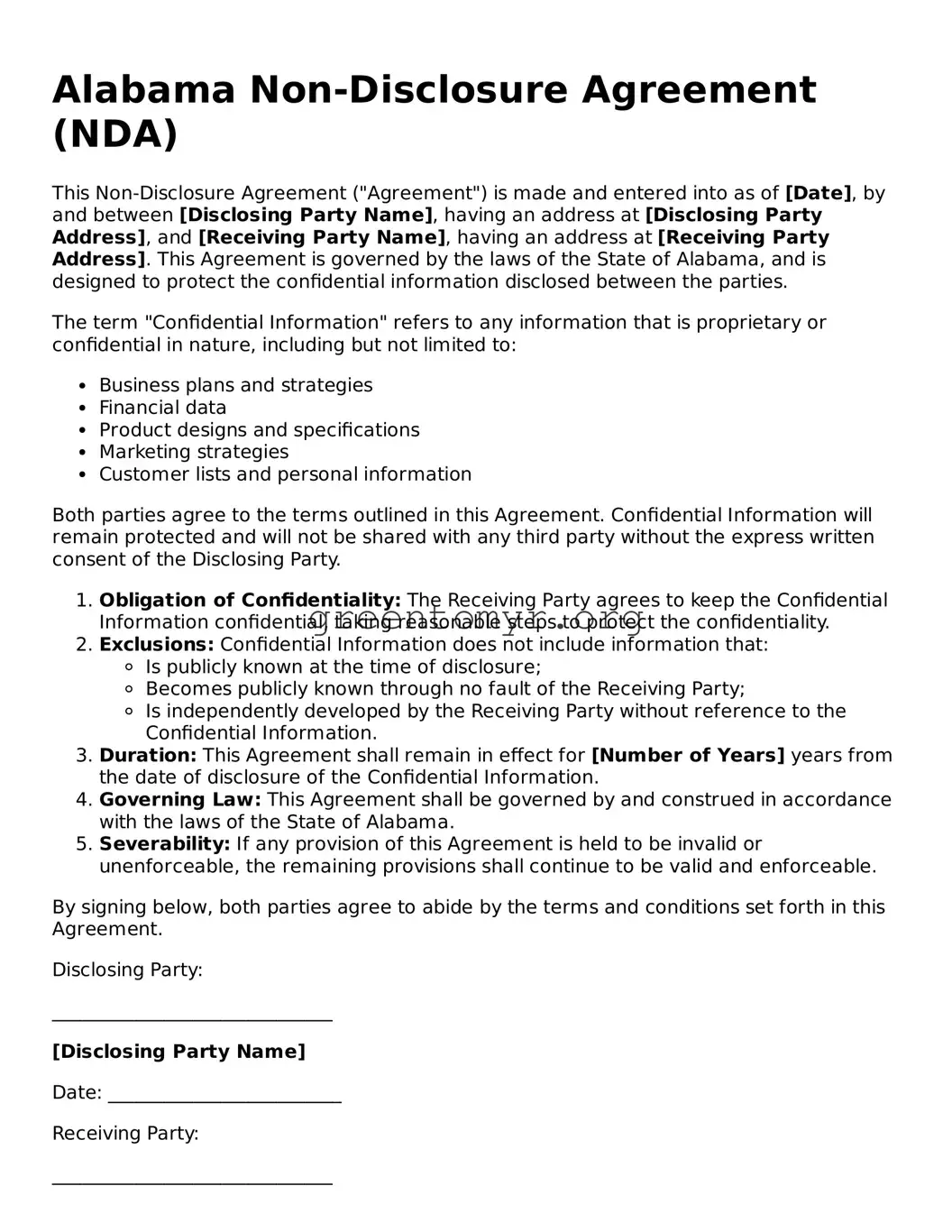Alabama Non-Disclosure Agreement (NDA)
This Non-Disclosure Agreement ("Agreement") is made and entered into as of [Date], by and between [Disclosing Party Name], having an address at [Disclosing Party Address], and [Receiving Party Name], having an address at [Receiving Party Address]. This Agreement is governed by the laws of the State of Alabama, and is designed to protect the confidential information disclosed between the parties.
The term "Confidential Information" refers to any information that is proprietary or confidential in nature, including but not limited to:
- Business plans and strategies
- Financial data
- Product designs and specifications
- Marketing strategies
- Customer lists and personal information
Both parties agree to the terms outlined in this Agreement. Confidential Information will remain protected and will not be shared with any third party without the express written consent of the Disclosing Party.
-
Obligation of Confidentiality: The Receiving Party agrees to keep the Confidential Information confidential, taking reasonable steps to protect the confidentiality.
-
Exclusions: Confidential Information does not include information that:
- Is publicly known at the time of disclosure;
- Becomes publicly known through no fault of the Receiving Party;
- Is independently developed by the Receiving Party without reference to the Confidential Information.
-
Duration: This Agreement shall remain in effect for [Number of Years] years from the date of disclosure of the Confidential Information.
-
Governing Law: This Agreement shall be governed by and construed in accordance with the laws of the State of Alabama.
-
Severability: If any provision of this Agreement is held to be invalid or unenforceable, the remaining provisions shall continue to be valid and enforceable.
By signing below, both parties agree to abide by the terms and conditions set forth in this Agreement.
Disclosing Party:
______________________________
[Disclosing Party Name]
Date: _________________________
Receiving Party:
______________________________
[Receiving Party Name]
Date: _________________________
